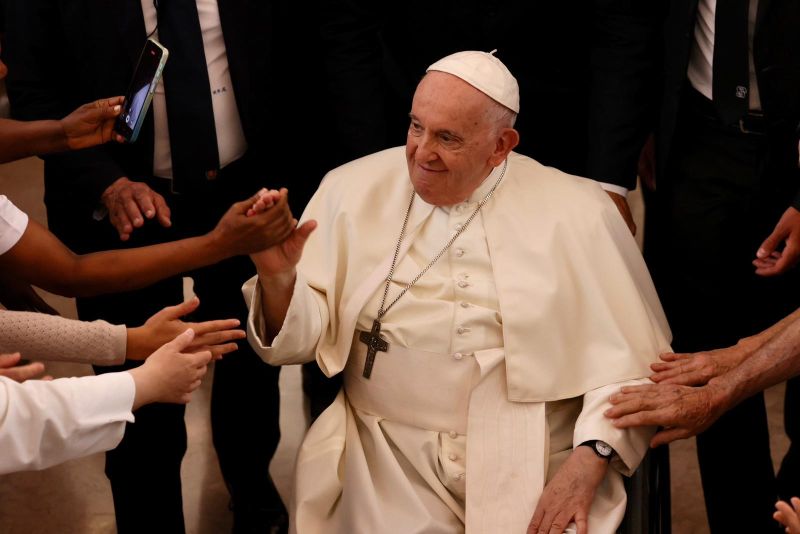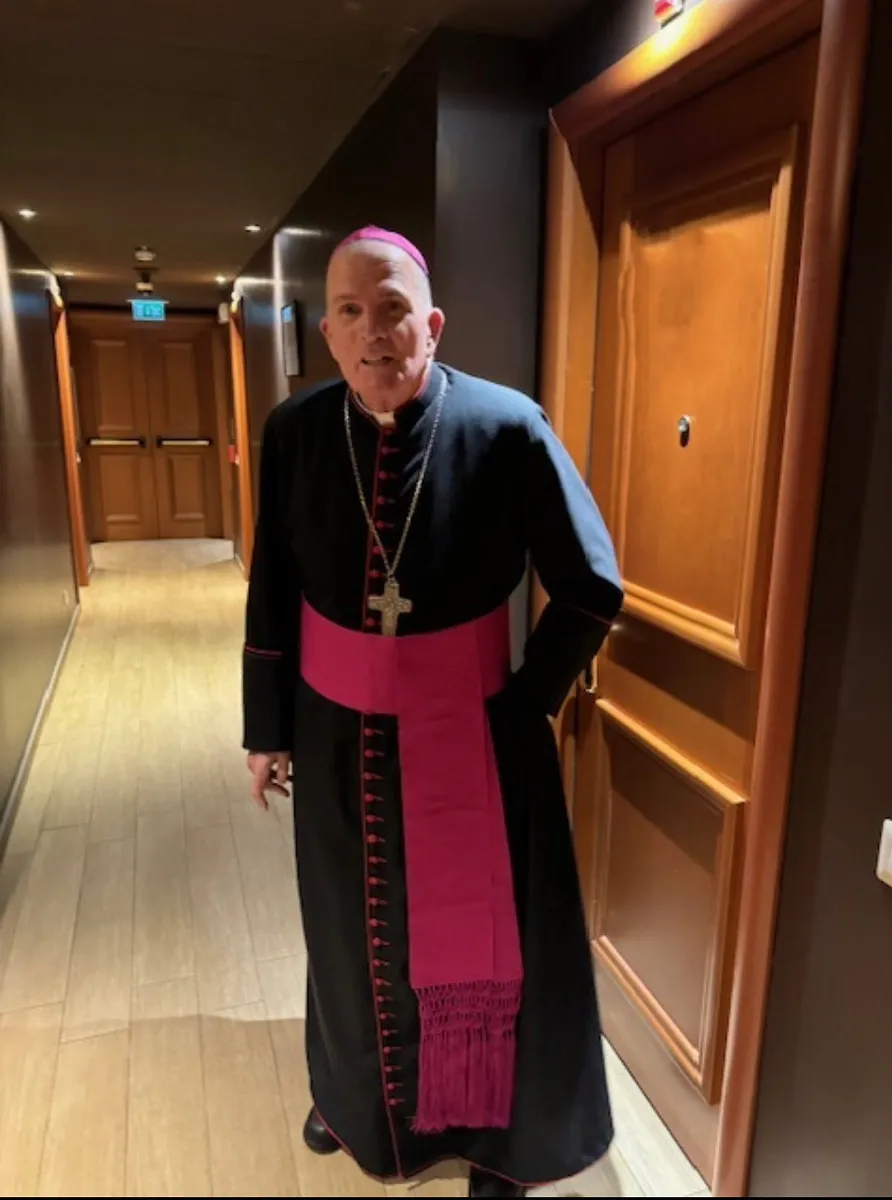
Rome Newsroom, Aug 4, 2023 / 04:35 am (CNA).
At a gathering with Portuguese charity workers Friday morning, Pope Francis went off-script to insist that Christian love must be tangibly lived out in the world, and not remain a figment of people’s fantasies.
“There is no abstract love, it does not exist,” the pope said. “Concrete love is the one that gets its hands dirty.”
Stating that it was difficult for him to continue reading his prepared text, the Holy Father delivered the impromptu remarks after hearing testimonials from ministry representatives, including a service that helps expectant mothers and their babies, a community formed to aid those suffering from cancer, and an “all-round” charity center.
The pope contrasted the witness of these ministries, which he said were part of a reality “that leaves a mark” and “is an inspiration to others,” to people who avoid contact with the poor and the marginalized and instead look for a “distilled life” that is only fantasy.
“How many distilled, useless lives that go through life without leaving a trace because their life has no weight?” the pope said.
The pope’s meeting with charity reps at Centro Paroquial de Serafina in Lisbon was part of his ongoing visit to Portugal and participation in World Youth Day.

Before going off-script, the pope underscored that concrete love “is the origin and goal of the Christian journey,” and spoke of two aspects of Christian charity.
First, he underscored the need to “do good together,” repeating “together” with the same emphasis he has used to speak of the Church being for “everyone” throughout his three days thus far in Portugal.
Citing one of the testimonials, Pope Francis said that we should never define people by their sickness or difficulty, but should instead recognize that everyone is “a precious and sacred gift for God, and for the Christian and human community.”
“In this way, let us enrich everyone together, and may everyone together enrich us, just as we are!” said the pope, words the resonated deeply in light of Portugal’s recent allowance of euthanasia, which Pope Francis criticized in his remarks to civil servants on Wednesday.
Then, the pope spoke of the need to act concretely. Borrowing from a 1960 homily by St. Pope John XXIII, Pope Francis said that the Church is “not an archaeological museum,” but “the ancient village well that provides water for the people of today, as it did in past generations.”

“This well is for quenching the thirst of newly-arrived travelers—just as they are—who bear the weight and fatigue of their journey!”, said the pope, going on to extoll Portuguese ministries and charities that responded to the concrete needs of people in their communities.
A third aspect, “being close to the most vulnerable,” was included in the part of the pope’s prepared remarks that he did not read, as was an extended reflection on the witness of St. John of God. The 16th century Portuguese saint founded the Brothers Hospitaller, and was known for telling those whom he begged from to “do good, brothers, to yourselves!”, a powerful witness to how charitable giving also enriches the giver.
The pope returned to the image of a well that quenches people’s thirst as he ended his impromptu remarks.
“Keep going and don’t get discouraged. And if you get discouraged, have a glass of water and keep going.”
If you value the news and views Catholic World Report provides, please consider donating to support our efforts. Your contribution will help us continue to make CWR available to all readers worldwide for free, without a subscription. Thank you for your generosity!
Click here for more information on donating to CWR. Click here to sign up for our newsletter.






Very fine commendations for acceptance of the marginalized by Pope Francis. Although, there’s a key word in there seemingly drawn from Amoris Laetitia. Concrete.
Recall His Holiness’ argument that a person’s concrete circumstances require our acceptance, in that he, she may be doing the best they can [referencing irregular unions and inclusive of disordered lifestyle] offering God veneration. And the notoriously known footnote 351 that Francis’ ‘forgot’ when and under what circumstances he inserted it. Although the footnote said the Eucharist be offered the unrepentant penitent doing his, her best in their concrete circumstances.
Giving and receiving is a win-win situation. Works of charity when done with respect and love add meaning to the act of the doer and the receiver.